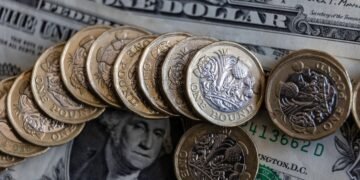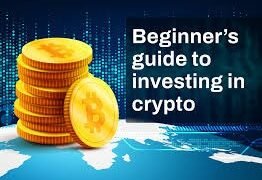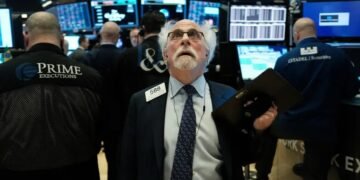With the US Federal Reserve likely to cut interest rates at its next meeting on September 17-18, investors are increasingly focusing on the potential impact of US monetary easing on industrial metals, particularly copper and aluminium.
HSBC analysts constructed two possible scenarios, offering insight into how copper and aluminum prices might behave during different economic outcomes.
In a soft landing scenario, where the US economy avoids recession and the Federal Reserve cuts interest rates gradually – three 25bp cuts. in 2024 and a further reduction of 75 m.p. in 2025, according to HSBC’s view – the industrial metals market is expected to follow a similar pattern to 2019.
That year, interest rate cuts were introduced as part of a mid-cycle adjustment to head off an economic slowdown. Copper and aluminum prices remained largely range-bound as the market had already priced in the economic slowdown ahead of the declines.
In this scenario, we may see a repeat of the trend of 2019. Demand had weakened before the cuts, and it took about two months after the first rate cut for copper and aluminum prices to form a W-shaped bottom.
Prices then recovered gradually. The muted market reaction stemmed from the fact that interest rate cuts were aimed at maintaining economic momentum rather than reacting to a crisis, which limited both the downside and upside potential for the metals in question.
Likewise, in the upcoming interest rate cycle, a quick recovery is possible, but prices are likely to remain range-bound unless there is a significant pick-up in demand.
If the US economy slips into recession, the Federal Reserve is expected to respond with more aggressive rate cuts.
“We believe metals prices will likely follow the path seen in the dot-com bubble of 2000-2003,” the analysts said.
During that period, both copper and aluminum saw significant declines—copper down 34 percent and aluminum down 28 percent—in a prolonged slump as global demand weakened.
In the event of a recession, the prices of industrial metals could suffer a sharp decline, potentially falling by 20% over the next year.
This scenario highlights the vulnerability of industrial metals to prolonged economic weakness. A recession would exacerbate the demand shock, prolonging the period of falling prices.
In the past, in such recessions metal prices bottomed out only after aggressive interest rate cuts had fully worked their way through the economy and growth began to stabilize.
Despite the potential challenges, HSBC favors aluminum in its coverage of the Asian metals and mining market. Analysts argue that aluminum may prove more resilient than copper during this interest rate cycle due to a combination of supply constraints and strong demand from the ongoing energy transition.
Tight supply across the aluminum value chain, supported by increased alumina prices, is expected to provide a strong margin.
This resilience could shield aluminum prices from the full brunt of the economic slowdown, especially as governments may increase investment in energy transition projects to boost growth.
In addition, the aluminum market has structural factors that support its price. Chinese authorities have limited the expansion of new production capacity and global production growth remains limited.
This inelasticity of supply, combined with solid demand drivers such as the energy transition, makes aluminum a more favorable investment during this period. Key players in the sector, such as China Hongqiao and Chalco, are expected to benefit from resilient margins and production growth. HSBC forecasts strong earnings growth for these companies in 2024, supported by full capacity utilization and high profit margins.
Analyzing past rate cut cycles, several parallels emerge that can help guide expectations for the current one.
For example, during the soft landing of 1995-1996, copper and aluminum prices fell modestly, but recovered as macroeconomic indicators improved.
However, during deeper economic crises, such as the dot-com bubble of 2000-2003 and the global financial crisis of 2007-2009, metal prices experienced steeper and more prolonged declines, followed by slower recoveries.
In the most recent 2019-2020 cycle, the Fed’s rate cuts were initially part of a mid-cycle adjustment.
Copper and aluminum prices fell by about 15% and 12% respectively, but started to recover before the COVID-19 pandemic hit.
The subsequent rebound in prices came from a resurgence in manufacturing activity and a weaker US dollar, factors that could again play a role in the current cycle.
While historical rate cut cycles provide valuable insights, HSBC analysts caution that the relationship between industrial metal prices and monetary easing explains only part of the picture.
The sentiment-driven impact of interest rate cuts on metal prices does not fully capture the complexities of supply and demand.
Tightness in copper and aluminum supply chains—exacerbated by underinvestment in new copper projects and capacity constraints in aluminum production—provides a strong layer of support for prices.
Meanwhile, demand for energy transition, a growing force in both the copper and aluminum markets, tends to be less sensitive to macroeconomic cycles. Government spending on energy transition initiatives such as the US Inflation Reduction Act is likely to continue, providing a cushion against weaker industrial demand.
At Bro In Finance, we are committed to helping traders navigate the complexities of the forex market. Our in-depth analysis, expert insights, and advanced tools empower you to make informed decisions and achieve your trading goals. Whether you’re a beginner or an experienced trader, Bro In Finance is your trusted partner in mastering the forex market. Visit our website for more trading tips and strategies to enhance your trading experience.
Check out our on Best Forex Brokers to know more about this topic
Check out the most crucial steps that you need to take when choosing your forex broker
Have you heard about an amazing Broker Platform called “AVATRADE“? We at Bro In Finance do recommend this amazing broker.
Check out here to figure out the best funded trader program: Which Funded Challenge is Best
Reference;








